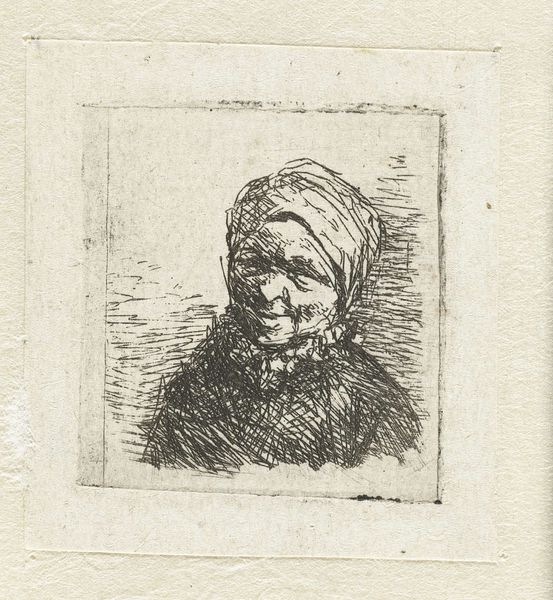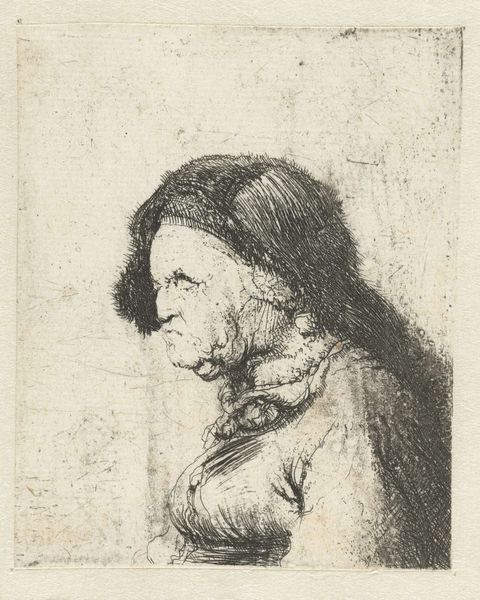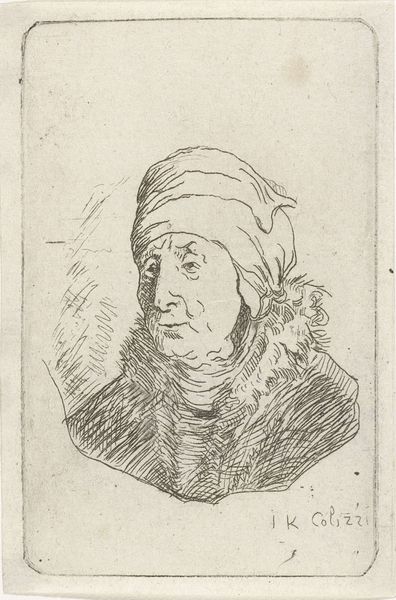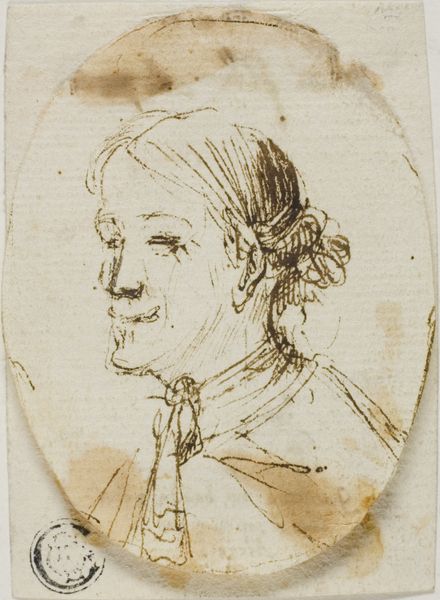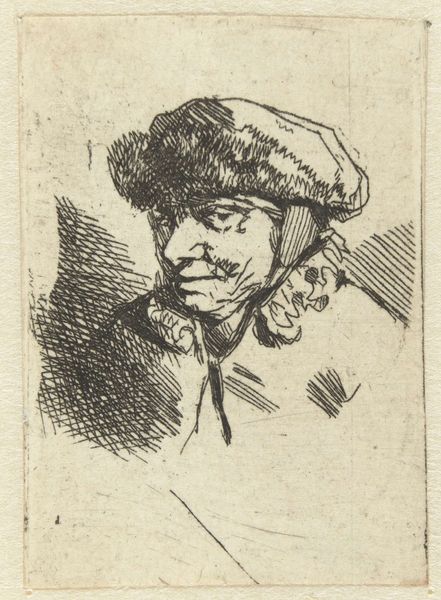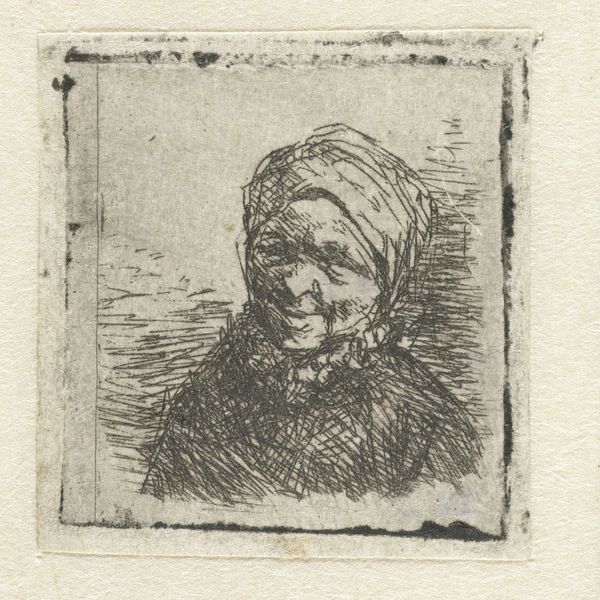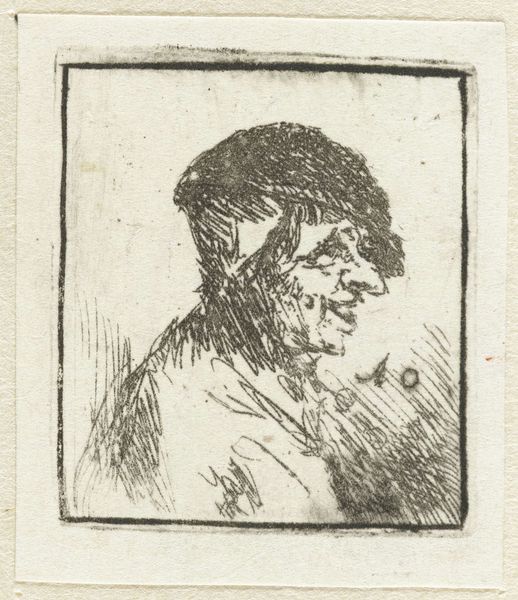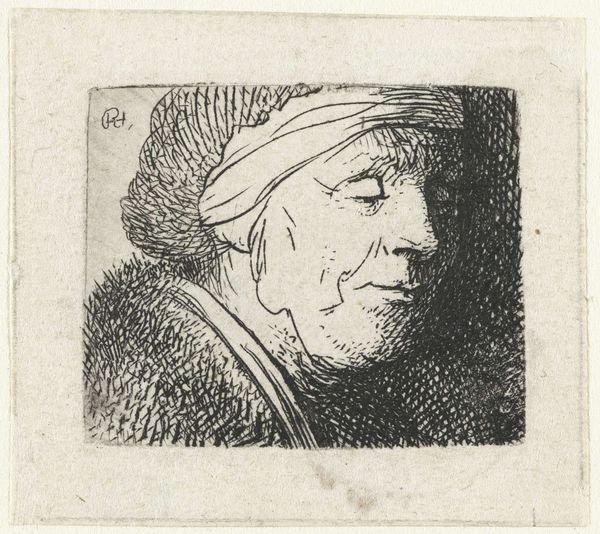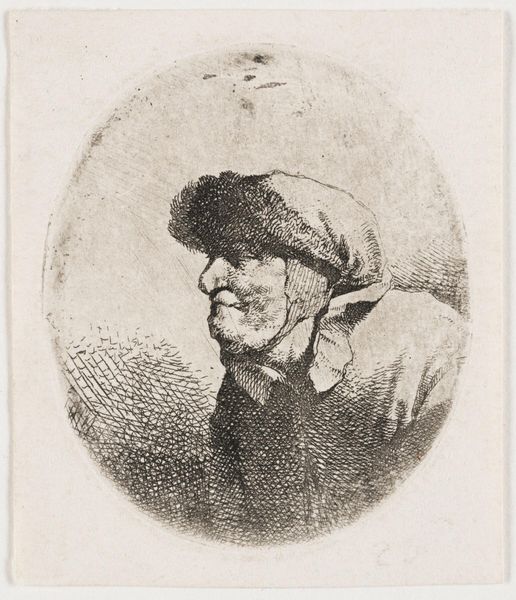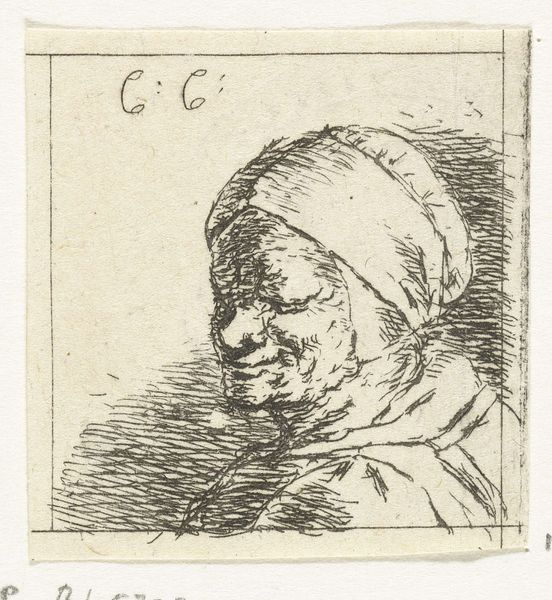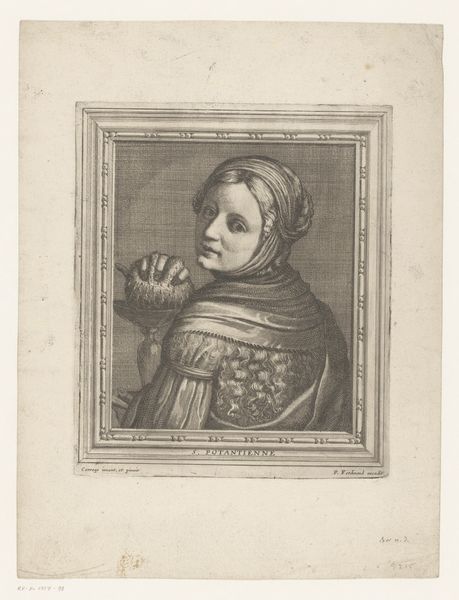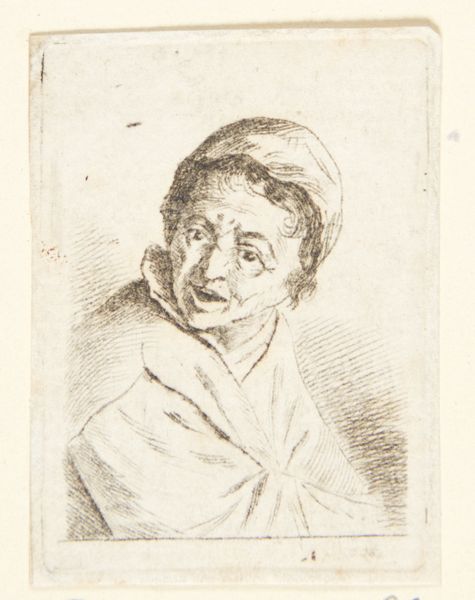
drawing, print, etching
#
portrait
#
drawing
#
baroque
#
dutch-golden-age
# print
#
etching
#
figuration
#
realism
Dimensions: plate: 1 3/16 x 1 3/16 in. (3 x 3 cm) sheet: 1 3/8 x 1 3/8 in. (3.5 x 3.5 cm)
Copyright: Public Domain
Curator: Immediately striking, isn’t it? A rather intimate portrayal of a face weathered by time, hardship perhaps? Editor: Yes, quite stark. This is “Peasant Woman,” an etching by Adriaen van Ostade. It's part of the Dutch Golden Age collection and dates sometime between 1610 and 1685. Currently, it resides here at the Met. Curator: An etching, you say? I am immediately drawn to the cross-hatching, the deliberate lines forming her face and head covering. Look how economical he is with his marks, yet he suggests such depth. Editor: The social context here is important. Ostade focused on portraying the everyday lives of ordinary people. How would this small etching have circulated? Was it made to be widely accessible or catered to a specific, art-collecting clientele? The politics of imagery come into play. Curator: The very act of depicting a peasant woman lends her a certain dignity. Consider the role of printmaking at that time: facilitating the spread of images beyond elite circles, albeit in a black-and-white medium. Ostade, like his contemporaries, elevated these quotidian subjects. It underscores a shift in artistic patronage and audience, making art and its representation more accessible and varied. Editor: Precisely! The technique and materials further reflect the era. Etching allowed for the relatively easy production of multiples. This speaks to the rising merchant class in the Netherlands and the increased demand for affordable art that reflected their values and interests. Curator: Looking at the materiality – the ink, the paper, the impressed line – you can feel the artist’s hand. He didn’t idealize the sitter; he rendered her with honest detail. The rough texture of the paper supports this raw realism. Editor: Right, this was made and bought during a unique time, within unique economic circumstances. Even now, thinking of it at the Met makes one consider its continuing cultural and social purpose. What kind of audience does the museum expect this piece to affect, and how? Curator: Ultimately, for me, it returns to the hand. It reminds me to consider what physical effort and skill it required to pull something so evocative from simple materials. Editor: A potent reminder, indeed.
Comments
No comments
Be the first to comment and join the conversation on the ultimate creative platform.


